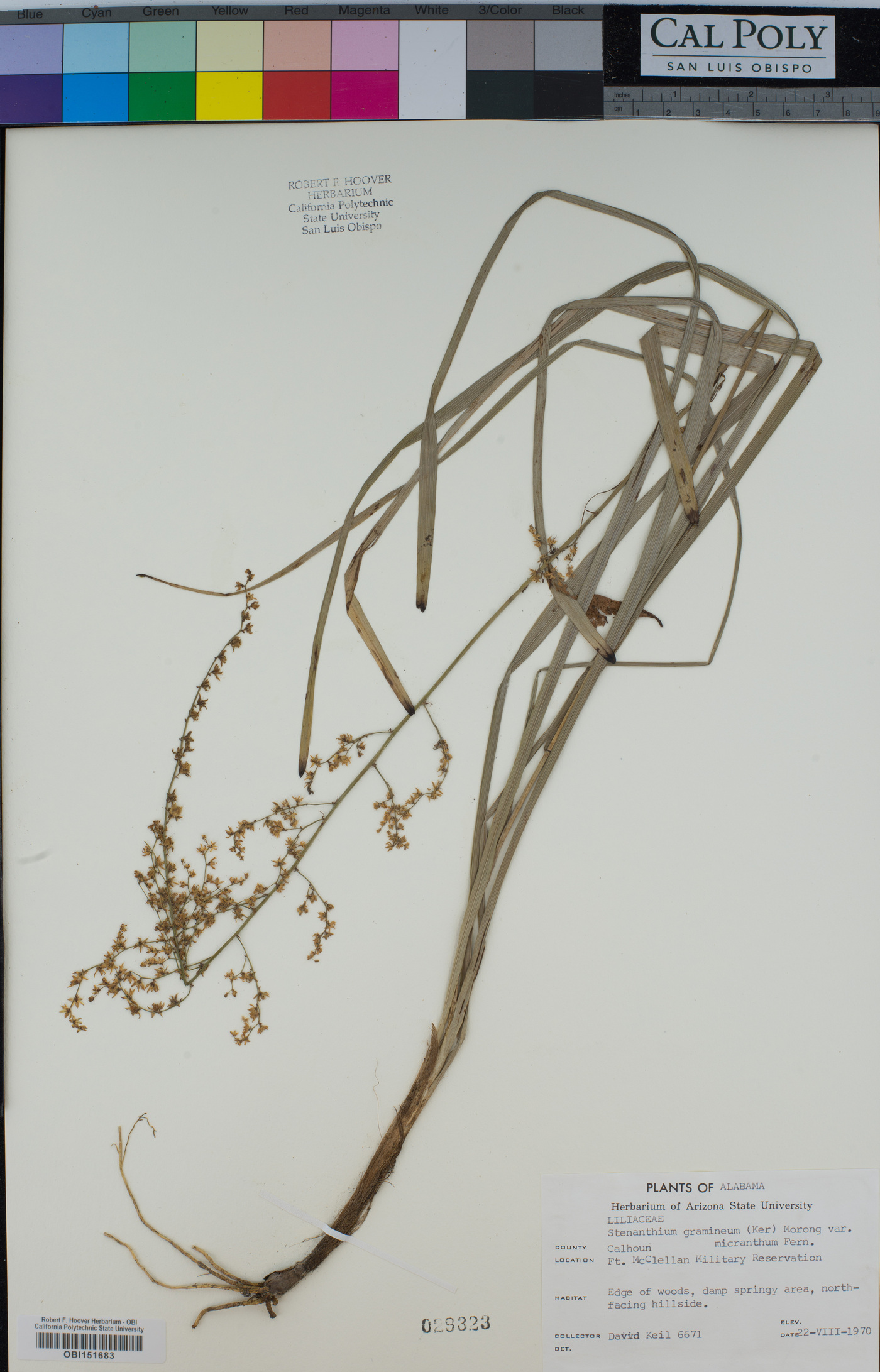Stenanthium
|
Family: Melanthiaceae |
The species of Stenanthium other than S. gramineum have at times been transferred to the segregate genus Stenanthella based on their racemose inflorescences, darker, campanulate flowers, and apically recurved tepals, leaving a monotypic Stenanthium with paniculate inflorescences, lighter colored, rotate flowers, and spreading tepals (P. A. Rydberg 1900). These differences are not sufficiently constant, however, to warrant the generic distinction (F. H. Utech 1987, 1987b). Among the melanthioid genera, Stenanthium shows greatest morphological similarities to Zigadenus Michaux (J. D. Ambrose 1975, 1980; S. J. Preece 1956; W. B. Zomlefer 1997b; W. B. Zomlefer et al. 2001). Stenathium gramineum and S. occidentale are occasionally cultivated as garden ornamentals.
Fls perfect or unisexual; tep 6, narrowly lanceolate, long-acuminate, adnate to the ovary-base; stamens 6, much shorter than the perianth, the filaments slender, the anthers obcordate, extrorse, with confluent thecae; ovary superior, ovoid, deeply 3-lobed, each lobe prolonged into a short, stout, outcurved style; capsule 3-lobed, short-cylindric, septicidal; perennial herb, the slender stem bulbous at base; lvs chiefly cauline, linear; infl a terminal white or greenish panicle. Ca 5, N. Amer. and Asia. Gleason, Henry A. & Cronquist, Arthur J. 1991. Manual of vascular plants of northeastern United States and adjacent Canada. lxxv + 910 pp. ©The New York Botanical Garden. All rights reserved. Used by permission. |

